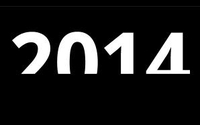 “Viewability” may not have been
the word of the year for 2014, but to many in the programmatic media-buying
industry, it will be its final word.
“Viewability” may not have been
the word of the year for 2014, but to many in the programmatic media-buying
industry, it will be its final word.
The conversation began late last year when Google announced it would allow marketers to transact on viewable impressions, and the industry seemed
to take a step forward when the Media Rating Council (MRC) lifted its advisory on using viewability as a currency for both display and video ads during the first half of 2014.
Although many marketers had reservations about the MRC’s standard of viewability — which requires 50% of an ad to be in-view for one continuous second (two for video) — the
general assumption was that the MRC’s decision to green-light viewability as a currency would usher in a new, higher-quality era of digital advertising, particularly when it came to real-time
bidding (RTB) exchanges. The introduction of viewability as a currency was meant to buoy viewability rates, but instead the opposite happened.
advertisement
advertisement
Viewability concerns were thrust center
stage earlier this month when Google — one of the largest players in the space and the company that was eager enough to begin transacting on viewability before the MRC gave the “all
clear” — announced that over half (56.1%) of all impressions served on its display ad platforms, including DoubleClick, are not viewable. This reveal, coupled with quarterly reports from
some MRC-accredited measurement vendors noting that viewability rates have been on a steady decline throughout the year, have sparked renewed interest on the topic.
Two weeks after
Google’s report, the Interactive Advertising Bureau (IAB) issued a whitepaper on the state of viewability heading into 2015. The IAB urged marketers to target 70% viewability on campaigns next
year — hardly the end-goal marketers would like to aim for — designating 2015 a “year of transition” for using viewability as a currency.
“Publishers,
agencies, marketers, and ad tech companies can resolve these differences by working collaboratively to make measurement make sense. We won’t do it by holding guns to each others’
heads,” stated Randall Rothenberg, president and CEO of the IAB, when the 70% goal was announced.
That’s not a ringing endorsement of the industry’s current state
of being in the battle against viewability. And having 2015 be classified as a transition year at the end of 2014, which was also referred to as a “transition” year for viewability as 2013
came to a close, makes the road ahead look a lot longer, if at all traversable.
Adding to the intrigue is a new report, which will be released next week, from The 614 Group and
Admonsters. The consultancy firm polled about 300 interactive media and advertising executives on various topics, including viewability. Nearly two-thirds (63%) of respondents believe viewability will
be digital publishing’s biggest challenge in 2015.
Rob Rasko, CEO and founder of The 614 Group, said the survey was taken before the 70% goal was announced by the IAB.
“However, most of the poll's respondents said that the majority of publishers would not reach high levels of viewability by the end of 2015, which is certainly in line with the IAB's position
that the new year be one of transition when it comes to viewability measurement,” he said.
Most respondents (70%) said they do not believe a majority of digital publishers will
achieve high standards in 2015.
Viewability handily beat “ad fraud” as 2015’s biggest challenge, per The 614 Group, with 26% calling fraud the biggest concern
heading into the new year. A recent report from the Association of National Advertisers (ANA) notes that global advertisers could lose $6.3 billion to bots in 2015, if current fraud rates
continue.
Respondents were relatively split when it came to whether they believe ad fraud will decrease in 2015; over half (58%) believe ad fraud will decrease, while 42% believe it
won’t.
The market’s two chief concerns heading into the new year are viewability and fraud, and while that statement would have been true exactly one year ago as well, with guidelines
and goals now in place, progress will be much easier to track. After all, there can only be so many years of transition before the “year of transition” replaces the “year of
mobile” as the joke of the year.